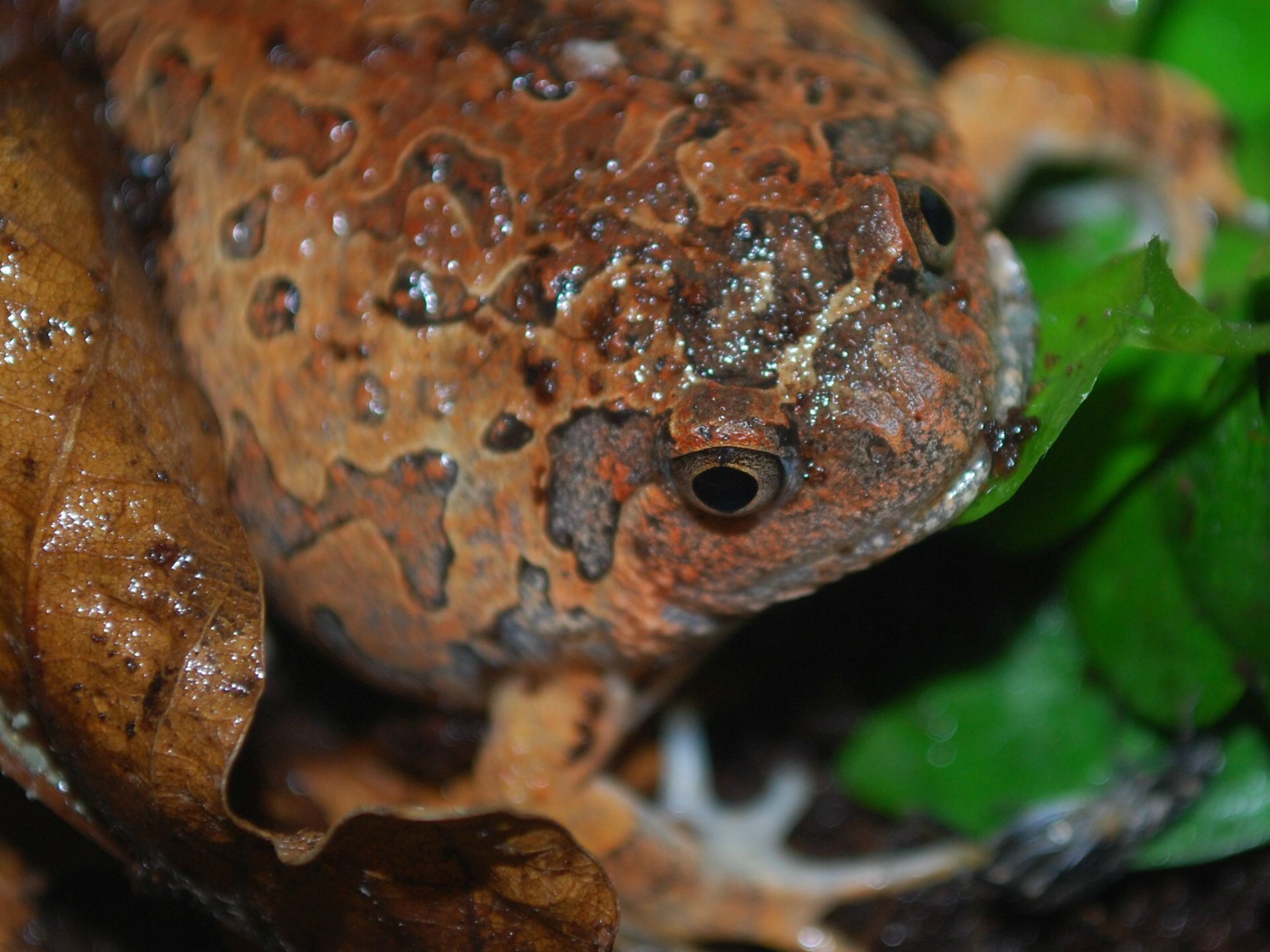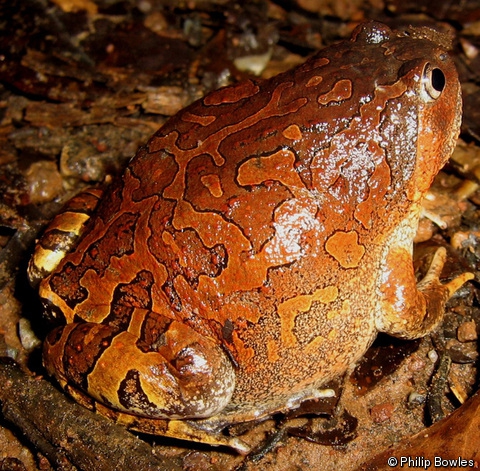| Citation |
|
Description |
Geographic Range [top]
Range Description: This relatively widespread species is known from 150-400 m asl in northern (Altig and Rowley 2014) and eastern (Blyth 1856, Guinevere Wogan pers. comm. December 2015) Myanmar, northern Thailand (Taylor 1962), northern Laos (Stuart 1999), central-southern Viet Nam (Inger et al. 1999, Nguyen et al. 2009), northern Peninsular Malaysia (Taylor 1962), and both northeastern (Jodi Rowley pers. comm.) and southwestern (Stuart and Emmett 2006, Neang and Holden 2008) Cambodia. These are unlikely to represent the actual limits of the species range as similar habitat and elevations occur in adjacent areas throughout mainland Southeast Asia. Doubt has been expressed as to whether the species actually occurs in Peninsular Malaysia (Chan et al. 2010), but further surveys are probably needed to confirm its absence.
Countries occurrence:
Native:
Cambodia; Lao Peoples Democratic Republic; Myanmar; Thailand; Viet Nam
Additional data:
? Number of Locations: 12
? Lower elevation limit (metres): 150
? Upper elevation limit (metres): 400
Range Map: Click here to open the map viewer and explore range.
Population [top]
Population: Little is known about this species population size and trends except that it has been detected in a number of surveys (including Blyth 1856, Stuart 1999, Stuart and Emmett 2006, Grismer et al. 2008, Altig and Rowley 2014). Despite having been recorded in both countries, observations of the species are described as relatively infrequent in Viet Nam (Truong Nguyen pers. comm. October 2013) and extremely rare in Myanmar (Guinevere Wogan pers. comm. December 2015). It is presumably difficult to make accurate assessments of the species population as it is an explosive breeder, appearing locally in great numbers over a short period and then effectively disappearing (Jeremy Holden pers. comm. March 2012). Further surveys are warranted to help determine this species relative abundance and population trends, though some population declines are probably occurring due to forest clearing for agricultural practices that are ongoing throughout parts of its range (Sodhi et al. 2009), as well as other forms of human encroachment (Inger et al. 1999, Stuart 1999, Stuart and Emmett 2006).
Current Population Trend: Decreasing
Additional data:
? Population severely fragmented: No
Habitat and Ecology [top]
Habitat and Ecology: This species is associated with lowland forest and has most commonly been observed on leaf litter adjacent to rivers (Stuart and Emmett 2006, Jodi Rowley, Bryan Stuart and Thy Neang unpubl. data). It is an explosive breeder (Jeremy Holden pers. comm. March 2012) and reproduction occurs in water where the tadpoles are suspension feeders (Altig and Rowley 2014). Habitat in many parts of this species range is moderately to severely degraded by the effects of rapidly expanding agriculture, human settlements and transportation (Inger et al. 1999, Stuart 1999, Stuart and Emmett 2006, Sodhi et al. 2009).
Systems: Terrestrial; Freshwater
Continuing decline in area, extent and/or quality of habitat: Yes
Movement patterns: Not a Migrant
Use and Trade [top]
Use and Trade: This species is harvested for human consumption in Laos and Cambodia (Phouthone Kingsada and Jeremy Holden pers. comm. March 2012). In Laos it has been sold in markets (Stuart 1999).
Threats [top]
Major Threat(s): This species is likely threatened by habitat degradation associated with the ongoing expansion of agricultural land throughout many parts of its range (Sodhi et al. 2009), as well as roads (Inger 1999) and human settlements (Stuart 1999). In Lao PDR and Cambodia the species is harvested locally for use as a food source (Phouthone Kingsada and Jeremy Holden pers. comm. March 2012), and has been observed for sale (presumably for consumption) in a Lao PDR market (Stuart 1999). Whether harvest of this species is occurring at levels that constitute a threat to its population is unclear and warrants further investigation.
Conservation Actions [top]
Conservation Actions: Conservation Actions
This species is known from a number of protected areas including Chatthin Wildlife Sanctuary in Myanmar (Altig and Rowley 2014), Doi Suthep National Park in Thailand (Taylor 1962), and Virachey National Park in Cambodia (Jodi Rowley pers. comm.). A large number of other protected areas are also included throughout its predicted range.
Conservation Needed
The first step towards ensuring this species long-term persistence is addressing the lack of data.
Research Needed
Further research is needed on the size and trends of its population, its distribution, life history and habitat requirements, rates of harvest, and threats.
Citation: IUCN SSC Amphibian Specialist Group. 2016. Glyphoglossus guttulatus. The IUCN Red List of Threatened Species 2016: e.T57725A55068516. http://dx.doi.org/10.2305/IUCN.UK.2016-3.RLTS.T57725A55068516.en. Downloaded on 21 March 2019.
Disclaimer: To make use of this information, please check the .
Feedback: If you see any errors or have any questions or suggestions on what is shown on this page, please provide us with feedback so that we can correct or extend the information provided
|


